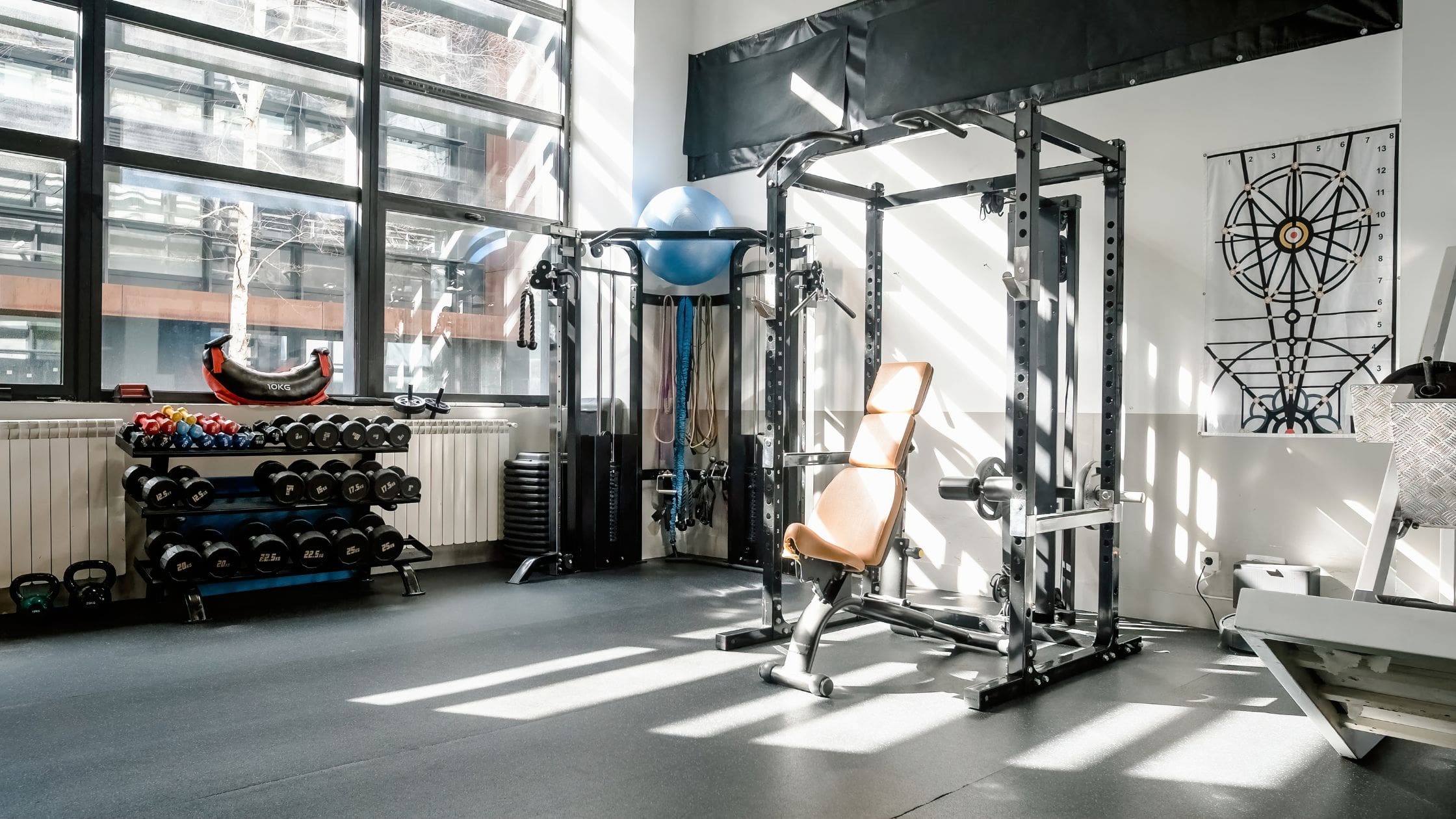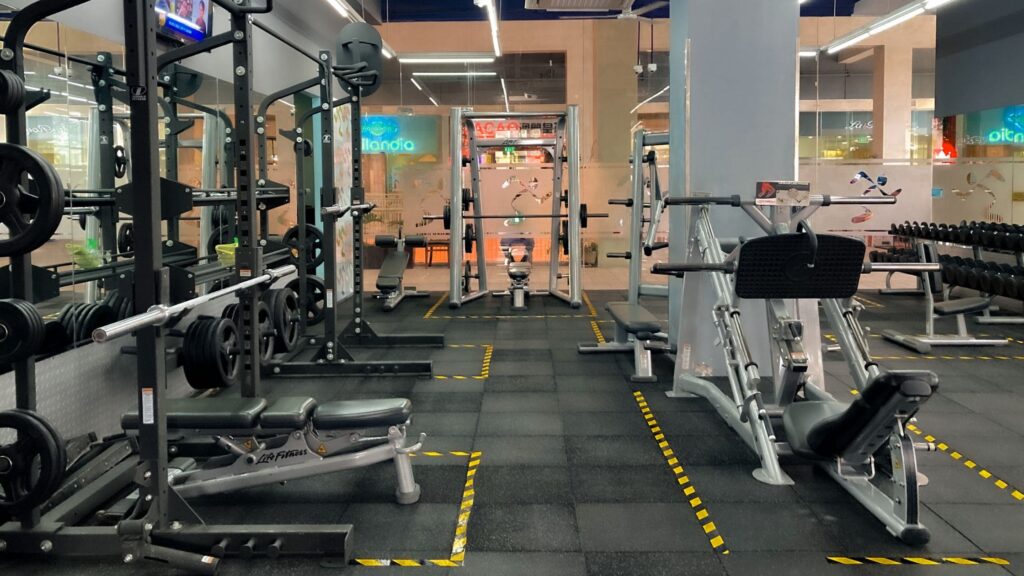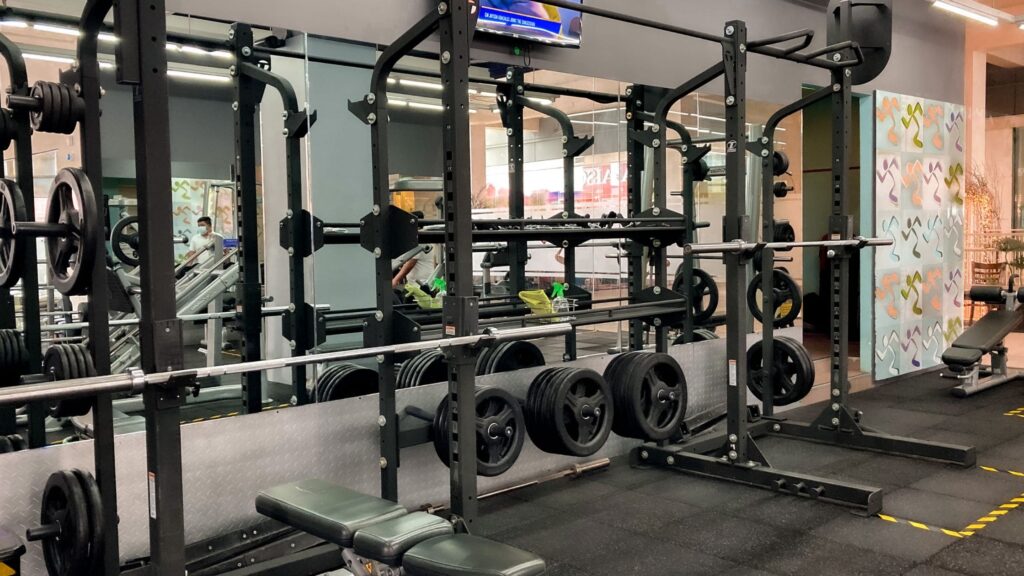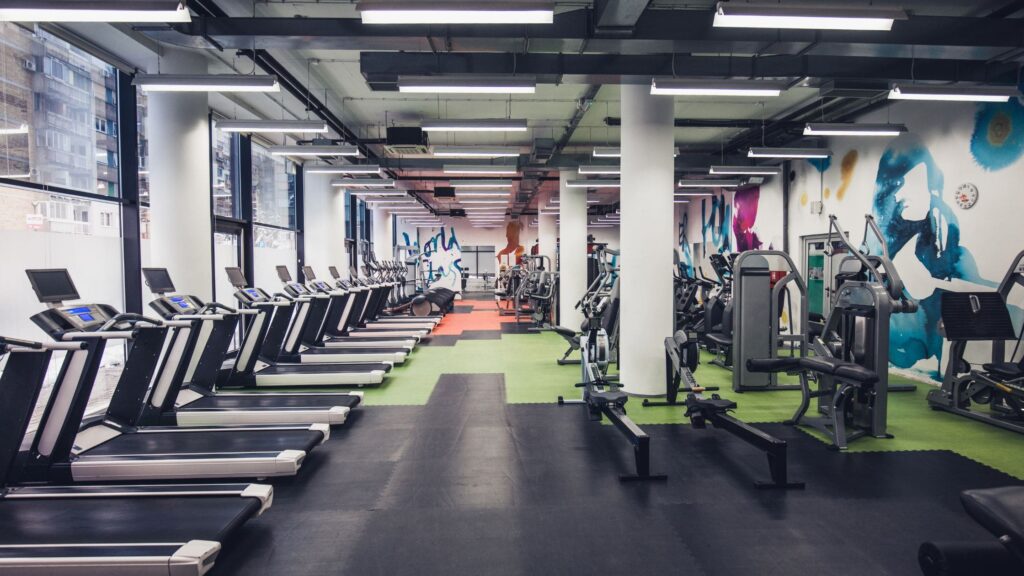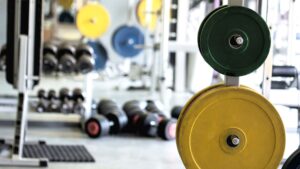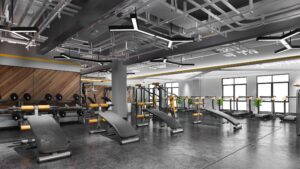As more of us turn to used gym equipment to stay fit without straining our wallets or the planet, understanding how to care for these pieces is non-negotiable. Keeping your gym gear in peak condition isn’t just about prolonging its life—it’s about ensuring safety and maintaining performance that meets your fitness needs. Whether you’re outfitting a home gym or stocking a commercial facility, regular maintenance is key. It guards against wear and tear, helps avoid issues like rust and odors, and ensures every workout is as effective as the first.
For everyone from the casual home user to the full-scale gym operator, knowing the ins and outs of gym equipment care can make all the difference in achieving fitness goals sustainably.
In this article, we’ll focus on essential maintenance tips that will help keep your gym equipment safe, functional, and ready to go—so you can stay focused on reaching those health milestones.
Why Is Maintaining Used Gym Equipment Important?
Maintaining used gym equipment is crucial for several compelling reasons. Neglecting maintenance schedules can lead to increased repair costs over time and pose serious safety risks to users, particularly with machines that have already endured significant use
So, let’s look at a few reasons why you should be more keen on maintenance;
- Safety Assurance: Regular maintenance ensures that all gym equipment is safe to use, reducing the risk of accidents and injuries.
- Cost Efficiency: By addressing repairs early, gym owners avoid the higher costs associated with major fixes, which can accumulate if issues are not promptly managed.
- Extended Equipment Lifespan: Properly maintained equipment can last as long as new units, if not longer, maximizing the investment in fitness gear.
- High Resale Value: Equipment that is kept in good condition retains its value and is more appealing if sold or traded.
- User Satisfaction: Well-maintained machines provide a better user experience, enhancing satisfaction and performance during workouts.
- Reduced Downtime: Routine checks and balances ensure that equipment is always operational, minimizing downtime due to repairs.
- Lower Long-Term Costs: Regular upkeep decreases the likelihood of costly breakdowns and extends the life of critical components.
- Early Issue Detection: Regular inspections help identify and address issues like loose bolts and frayed wires before they lead to larger problems.
- Enhanced Customer Retention: In commercial settings, reliable and well-maintained equipment helps maintain customer satisfaction and encourages repeat business.
- Preventive Care Necessity: Equipment components such as motors, rollers, and cables degrade over time and require more frequent attention as they age.
What are the Key Steps for Maintaining Used Gym Equipment?
Regular maintenance not only extends the lifespan of the equipment but also enhances the user’s experience by ensuring that the machines operate smoothly and reliably. Here’s a detailed look at the general steps involved in the maintenance process:
- Cleaning and Sanitizing: Daily cleaning is crucial as it removes sweat and oils that can corrode metal parts and damage upholstery. Using the right cleaning agents prevents the buildup of bacteria and keeps the equipment looking and smelling fresh.
- Visual Inspection: This step involves examining the equipment for any signs of wear or damage such as loose bolts, cracks, torn upholstery, or fraying cables. Immediate attention to these issues prevents small problems from becoming major concerns.
- Functional Test: Regularly operating the equipment can help identify any abnormal noises or operational issues. This step ensures that all moving parts are working correctly and that the equipment is safe for use.
- Lubrication: Proper lubrication of moving parts like treadmill belts and elliptical joints reduces friction, which can cause wear and lead to breakdowns. It’s essential to use the lubricant recommended by the manufacturer to avoid causing damage.
- Alignment and Tightening: Keeping everything aligned and tightened correctly ensures the equipment functions smoothly. This includes checking belts, bolts, and pins, which should be securely fastened to prevent accidents and malfunctions.
- Record Keeping: Documenting maintenance activities is crucial for tracking the history of each piece of equipment. This record helps in identifying recurrent issues and scheduling future maintenance sessions.
- Professional Servicing: For more complex issues, especially those involving electrical malfunctions or unusual noises, professional servicing is recommended. Certified fitness machine technicians can diagnose and fix problems that go beyond routine maintenance.
Additional considerations include:
- Emphasizing the importance of daily cleaning to prevent long-term damage from sweat and debris.
- Conducting weekly checks to identify physical damage early.
- Monthly lubrication, especially for machines with numerous moving parts, to ensure smooth operation.
- Addressing issues like slipping belts or malfunctioning pulleys immediately to avoid exacerbating the problem.
- Regular checks by professionals to handle intricate repairs and maintain high traffic equipment, ensuring customer satisfaction and business continuity.
Visual Inspection
Visual inspections are critical in the regular maintenance schedule of any gym equipment. This process involves:
- Checking for any cracks in weight stacks or the frame of the machine, which can compromise structural integrity.
- Inspecting cables for fraying, which could lead to sudden failures during use.
- Looking for missing pins or loose components that could affect the stability or functionality of the equipment.
- Examining upholstery for tears or degradation, which not only affects the appearance but can also lead to discomfort or injury during use.
Functional Test
Functional testing is a key step in preventive maintenance that ensures equipment is operating correctly. This involves:
- Turning on cardio equipment to listen for any unusual sounds like grinding or squeaking, which could indicate internal issues.
- Testing all adjustable parts such as seat heights, cable pulleys, and resistance settings to ensure they operate smoothly without sticking or resistance.
- Verifying that electronic displays and controls function properly, ensuring that users can accurately monitor their activity and adjustments.
Component Check
Regularly examine critical components of the equipment, including motors, belts, pulleys, and joints, for signs of excessive wear. It’s vital to ensure that all moving parts are functioning smoothly and without unnecessary strain, which could lead to failures. Additionally, verify that electronic components, such as displays and controls, are functioning correctly. This includes checking for error messages, ensuring that the display is readable, and that settings adjust properly without glitches.
Cleaning
Regular cleaning not only maintains the equipment’s aesthetic and functional quality but also contributes to user safety by preventing skin irritations and other hygiene-related issues. Maintaining a strict cleaning regimen is essential for the upkeep of gym equipment:
- Daily: Wipe down all surfaces with a disinfectant to remove sweat and oils, which can corrode metal parts and degrade finishes. This simple step is crucial for preventing the buildup of bacteria and ensuring that the equipment is hygienic for every user.
- Weekly: Conduct a deeper clean of upholstery and touchpoints. This includes areas like handles and seat adjustments, which see a lot of contact during use.
- Monthly: Clean less accessible areas such as motor compartments or the insides of housings to remove dust and debris that could affect the equipment’s functionality and longevity.
Lubrication
Applying the correct lubricant to moving parts is crucial and should be done monthly or according to the manufacturer’s guidelines. Use only recommended products, such as silicone-based lubricants for treadmills, to ensure compatibility and effectiveness. Proper lubrication prevents the parts from wearing out prematurely and keeps the equipment running smoothly.
Record Keeping
Maintaining a detailed log of maintenance activities is highly beneficial. Use either a digital or physical logbook to record dates, specifics of maintenance performed, parts replaced, and any issues encountered. This documentation is invaluable for tracking the equipment’s maintenance history, identifying recurring problems, and planning future upkeep actions.
How Often Should You Maintain Used Gym Equipment?
The frequency of maintenance for used gym equipment can vary based on several factors, each playing a crucial role in determining the optimal maintenance schedule to ensure durability, safety, and functionality.
- Daily Usage Rate and Intensity: Equipment in high-traffic gyms, where machines see continuous use throughout the day, may require more frequent checks and servicing. Busy gyms should consider bi-weekly or even weekly professional assessments to address any wear and tear promptly.
- Age of the Equipment: Older equipment generally demands more attention. Frequent inspections can help catch issues that might lead to breakdowns. Older machines often need more meticulous care and possibly more frequent replacement of worn-out parts to maintain optimal performance.
- Environmental Factors: Gyms located in areas with high humidity or dust levels may find that their equipment degrades more quickly. These conditions can accelerate wear on components and require more frequent cleaning and lubrication to prevent rust and other damage.
Additionally, it is useful to adhere to the following guidelines:
- General Rule of Thumb: A good practice is to service gym equipment at least twice a year for moderate use scenarios. However, in high-traffic facilities, more frequent maintenance may be necessary to ensure reliability and safety.
- Specific Equipment Needs: Cardio machines like treadmills, ellipticals, and stair climbers, which feature numerous mechanical and electronic components, typically require more frequent and specialized maintenance. These machines endure more dynamic stress and have parts that can wear out quickly if not regularly checked and serviced.
- Preventive Maintenance: Establishing consistent maintenance intervals is vital. Regular checks help identify and address minor issues like loose belts or fraying cables before they turn into major, costly repairs.
What are the Different Types of Used Gym Equipment and Their Maintenance Needs?
Different types of equipment have varying maintenance needs based on their design and use.
- Cardio Equipment: This category includes machines like treadmills, ellipticals, and stationary bikes, which are used frequently and have moving parts requiring regular lubrication and electronic checks to ensure they function correctly.
- Strength Equipment: Such as weight machines, cable systems, and free weights, typically require less frequent lubrication but need thorough inspections of cables, pulleys, and bolts to ensure they are not worn out or loose.
- Free Weights: Items like dumbbells, barbells, and kettlebells need regular checks for rust, loose attachments, or potential cracks to ensure they are safe to use.
- Functional Training Gear: Equipment used for functional training, including medicine balls, resistance bands, and sandbags, often feature materials like fabric and rubber, which must be inspected for tears or areas of wear due to their frequent handling and use.
Cardio Equipment
Cardio machines are essential in any fitness regimen, requiring consistent maintenance to keep them in optimal working condition:
Treadmills
Require regular attention to belt tension and lubrication of the deck to prevent friction and overheating, which can cause premature wear. It is also important to clean the motor compartments monthly to avoid dust accumulation that could lead to overheating or electrical faults.
Ellipticals
Ellipticals require consistent maintenance to ensure their longevity and performance. Regular lubrication of pivot points is crucial to prevent squeaking noises that can become bothersome during use. It’s also vital to check the console displays for errors, which could indicate electrical issues needing professional attention. Additionally, inspecting foot pedals and handles for secure attachments is necessary to guarantee user safety, preventing accidents related to loose components.
Exercise Bikes
Exercise bikes are popular in both home and commercial gyms, demanding frequent inspections to maintain optimal function. It’s important to regularly check pedals, chains, or drive belts for any signs of wear or damage. Seat adjustments should also be tested to ensure stability and comfort during use. These checks help avoid unexpected malfunctions that could affect workout quality and safety.
Rowing Machines
Maintenance of rowing machines focuses on ensuring smooth operation and preventing mechanical degradation. Check the chain for rust or slackness, which can affect the pulling motion. Lubricating the rail is essential for smooth sliding, enhancing the user experience. Also, keeping the flywheel area free from dust buildup is crucial as it could hinder the movement and functionality of the machine.
Stair Climbers
Stair climbers undergo considerable stress with regular use, necessitating thorough inspections. It is important to inspect the steps or pedals for any cracks that could pose safety risks. Ensuring that internal gears and belts are well-lubricated is also critical to prevent increased friction that can strain motors and electronics, potentially leading to costly repairs.
Strength Equipment
Maintaining strength equipment is essential to ensure durability and safety. Regular checks for wear or misalignment on cables, pulleys, and weight stacks can prevent equipment failure and possible injuries.
Weight Machines
For weight machines, it is crucial to check that the pins move smoothly and easily to guarantee user safety and equipment functionality. Regular inspection for fraying on the cables is necessary as this could lead to unexpected breaks during use. Ensuring that weight plates are securely stacked will prevent accidents and maintain the integrity of the machine.
Cable Machines
Cable machines require meticulous attention to the condition of pulleys and the tension of the cables. Proper lubrication of guide rods is also essential to maintain smooth operation and prolong the lifespan of the equipment. Any signs of wear on the cables should be addressed immediately by replacing them to ensure maximum safety and performance.
Smith Machines
Smith machines need regular lubrication of the guide rails to ensure that the bar glides smoothly. It is also vital to check that the safety catches are functional to prevent accidents during use. Regular maintenance checks can greatly extend the life of Smith machines and enhance the safety of their operation.
Power Racks
Power racks are essential for heavy lifting workouts. Regular maintenance should include:
- Bolt Inspections: Ensure all bolts and attachments are tightly secured. Any looseness can lead to structural instability, potentially causing injury.
- J-hook and Safety Bar Checks: These components bear a significant load and should be inspected for any signs of wear or damage. Regular checks help maintain the safety and functionality of the rack.
Squat Racks
Squat racks require specific attention to maintain their integrity and safety:
- Stability Checks: Verify that anchor bolts are stable and fully secured to the floor. This prevents any wobbling or movement that could lead to accidents.
- Structural Integrity: Regularly inspect rack holes for any signs of bending or damage. Damaged holes can affect the rack’s ability to safely hold weights, leading to potential accidents.
Free Weights
Free weights are fundamental in strength training due to their versatility and effectiveness. Maintaining free weights involves straightforward actions that can significantly extend their usability and ensure safety.
Dumbbells
Dumbbells come in various materials, including metal, rubberized, and neoprene-covered ones. Maintenance includes:
- Surface Checks: Inspect for tears in rubberized or neoprene coatings, which are common with frequent use. Torn coatings should be replaced to avoid further damage.
- Cleaning Routine: Implement a weekly cleaning regimen to remove dirt and sweat residue. This not only preserves the material but also maintains hygiene and user safety.
Barbells
Barbells are essential for heavy lifting exercises, requiring specific maintenance to function properly:
- Rust Removal: Use a wire brush to remove rust or lifting chalk buildup, which can impede performance.
- Lubrication: Regularly oil the bearings to ensure smooth sleeve rotation. This monthly maintenance helps in prolonging the life of the barbell and ensuring safety during lifts.
Kettlebells
Kettlebells, known for their efficiency in ballistic exercises, require simple yet consistent upkeep:
- Handle Inspection: Regularly check handles to ensure they are smooth and free of burrs or cracks that could lead to hand injuries.
- Corrosion Prevention: Wipe down kettlebells after use to remove sweat and prevent corrosion, which can degrade the metal over time.
Weight Plates
Weight plates are prone to wear and tear due to their heavy usage:
- Crack Inspection: Regularly check for any cracks, especially if the plates are dropped often. Cracks can lead to structural failures.
- Center Hole Check: Ensure the center hole is not warped or damaged, as this can affect the loading and unloading from barbells or storage racks.
Functional Training Equipment
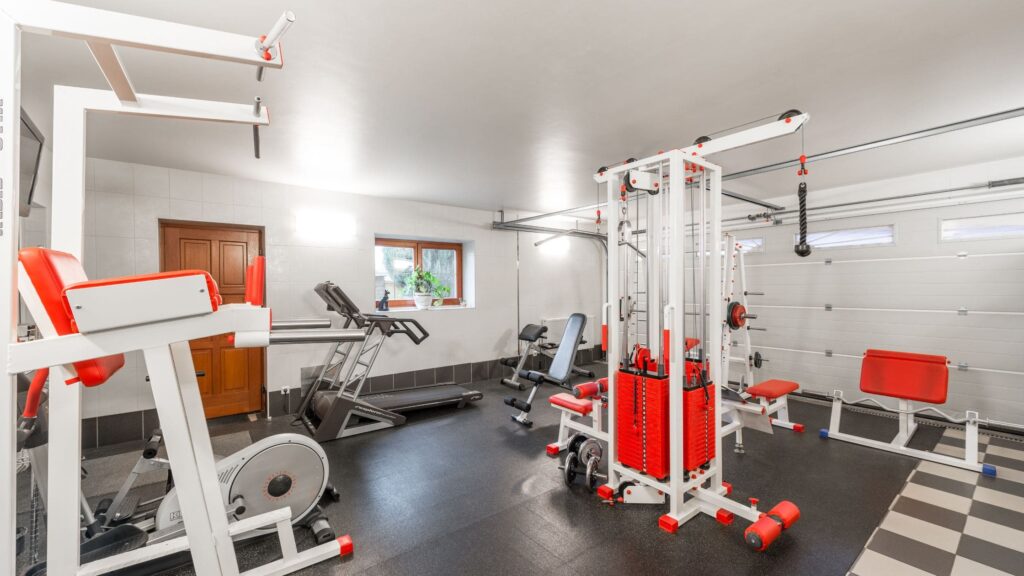
Resistance Bands
Resistance bands are essential tools for adding progressive tension to various exercises. When maintaining these bands, you should:
- Inspect Regularly: Check for any tears or weak spots that could cause the bands to snap under tension. Early detection of damage can prevent injuries.
- Replace Promptly: Replace any bands that show signs of wear or damage immediately to maintain the safety and effectiveness of workouts.
Suspension Trainers (e.g., TRX)
Suspension trainers are popular for core and flexibility training, requiring specific care to maintain their integrity:
- Washing Guidelines: Follow the manufacturer’s guidelines to wash the straps regularly, removing sweat, dirt, and other particulates that can degrade the material over time.
- Anchor Point Inspection: Before each use, check the anchor points for stability. This ensures that the equipment will hold up under strain and provide a safe workout environment.
Battle Ropes
Battle ropes are used for high-intensity interval training and pose unique maintenance challenges:
- End Check: Regularly inspect the ropes for frayed ends or signs of unraveling. Addressing these issues early can prevent further damage.
- Proper Storage: Store the ropes in a dry area to prevent mold and mildew build-up, which can weaken the fibers and reduce the lifespan of the equipment.
Storage and Organization Equipment
Proper storage and organization are necessary for maintaining the safety and longevity of gym equipment. Ensuring that racks and holders are stable not only preserves the equipment but also prevents accidents.
Dumbbell Racks
Dumbbell racks play a pivotal role in keeping fitness areas tidy and safe:
- Stability Checks: Regularly inspect dumbbell racks for loose screws and ensure they are level to prevent tipping.
- Maintenance of Components: Rubber sleeves on the racks can wear down over time, affecting the grip and protection of the dumbbells. Check these components periodically and replace them as needed to ensure that the metal does not directly contact the dumbbells.
Plate Trees
For plate trees, which hold weight plates of various sizes, key maintenance includes:
- Stability and Weight Distribution: Regularly check that the plate tree is stable and that weights are distributed properly to avoid tipping.
- Rust Prevention: Ensure that metal pegs are free from rust, which can damage the plates and reduce the structural integrity of the tree.
Barbell Holders
Barbell holders need to be maintained to protect both the barbells and the users:
- Secure Mounting: Check that barbell holders are securely mounted to the wall or floor, as loose fittings can lead to accidents.
- Protective Measures: Use padding or rubber inserts to prevent damage to the barbells from metal-on-metal contact, which can also reduce noise during placement and retrieval.
What Tools and Supplies Are Essential for Gym Equipment Maintenance?
Maintaining gym equipment requires a well-thought-out set of tools and supplies to ensure that everything runs smoothly and safely. Here’s a list of essential items you should have:
- Basic Hand Tools: Screwdrivers, wrenches, and Allen keys are indispensable for tightening bolts and making adjustments.
- Lubricants: Silicone-based lubricants are recommended for most fitness equipment, helping to ensure smooth operation and protection against wear.
- Cleaning Agents: Mild dish soap, disinfectant wipes, and soft cloths should be used to keep equipment clean and hygienic without damaging surfaces.
- Replacement Parts: Keep a stock of common replacement parts such as belts, cables, pins, and bolts to quickly address any issues.
- Wire Brush or Soft Brush: Useful for removing rust and chalk buildup, especially from metal parts like barbells.
- Vacuum or Compressed Air: Ideal for cleaning out dust and debris from motor compartments and other hard-to-reach areas.
Additional Tips:
- Avoid harsh chemicals like ammonia or acetone, which can damage upholstery and corrode metal.
- Use non-abrasive cloths and soft bristle brushes to maintain paint finishes and prevent scratches.
- Keeping spare cables, belts, or pins on hand can greatly reduce downtime and ensure your equipment is always ready for use.
How to Document and Track Maintenance for Used Gym Equipment?
Tracking maintenance activities is crucial for the longevity and safety of gym equipment. Consider these options:
- Digital vs. Physical Maintenance Logs: Digital logs can be easily updated and stored, while physical logs provide a tangible record that some prefer.
- Importance of Tracking: Recording dates and actions performed helps in scheduling future maintenance and identifying recurring issues.
Additional Points:
- Maintaining clear records simplifies budgeting for parts and professional services.
- Documentation provides proof of responsible upkeep, crucial if equipment is audited for safety compliance or sold.
- Include details like model, serial number, and usage frequency in the logs to provide a comprehensive maintenance history.
What Are the Risks of Neglecting Used Gym Equipment Maintenance?
Neglecting maintenance can lead to several risks, impacting both the user experience and the financial bottom line:
- Sudden Breakdowns: These can lead to costly emergency repairs.
- Increased Risk of Injury: Malfunctioning parts may cause accidents or injuries to users.
- Faster Wear-and-Tear: Neglect shortens the lifespan of the equipment significantly.
- Negative Reputation: For commercial gym operators, poorly maintained equipment can damage the business’s reputation.
Additional Considerations:
- Small issues like slipping belts or loose cables can escalate into major problems if not addressed promptly.
- Malfunctioning machines can create bottlenecks during peak hours, affecting customer satisfaction.
How Can You Plan Ahead for Gym Equipment Service and Maintenance?
Planning ahead for gym equipment maintenance is essential for ensuring longevity, safety, and optimal performance of your fitness machines. By implementing a proactive maintenance schedule, you can avoid unexpected breakdowns and costly repairs, ensuring that equipment is always ready and safe for use.
Creating a Maintenance Schedule
To keep your gym equipment in top condition, creating a customized maintenance schedule is crucial. Consider these guidelines:
- Customize Maintenance Intervals: Depending on the intensity of use, set daily, weekly, monthly, and quarterly maintenance tasks.
- List Specific Tasks: Include regular lubrication, bolt tightening, cleaning motor compartments, and cable inspections to prevent malfunctions and wear.
Maintenance Checklist
A comprehensive maintenance checklist is vital for systematic care:
- Daily: Wipe down all equipment to remove sweat and debris, which can corrode and damage surfaces.
- Weekly: Perform functional tests to check for any unusual sounds or mechanical hitches that could indicate underlying issues.
- Monthly: Deep clean all equipment, focusing on areas like motor compartments and underneath machines where dust and grime accumulate.
Budgeting for Maintenance Costs
Effective management of gym equipment includes proactive financial planning for maintenance and repairs. Allocating funds specifically for routine upkeep and unexpected repairs is crucial. This approach ensures that when major components need replacement or repairs arise, the financial strain on your facility is minimized.
- Proactive Budgeting: Set aside a portion of your budget regularly to cover maintenance costs. This foresight protects against sudden expenses that can disrupt your financial stability.
- Scheduled Service Discounts: By planning ahead, you may secure discounts for bulk purchases of repair parts or scheduled services, which can significantly reduce overall maintenance costs.
- Reduced Equipment Downtime: A well-structured financial plan for maintenance means less downtime for equipment, which enhances the reliability of your service and satisfaction among gym users.
When Should You Seek Professional Maintenance Services?
When managing gym equipment, knowing when to seek professional maintenance services is crucial for ensuring safety, functionality, and longevity. You should consider professional intervention in the following situations:
- Persistent Electrical Malfunctions: If your equipment frequently experiences electrical issues despite your troubleshooting efforts, it indicates a deeper, possibly hazardous problem.
- Loud, Recurring Noises or Significant Structural Damage: Sounds such as grinding or clanking, or visible signs of wear like cracks and bends in structural components, require immediate professional assessment.
- Repeated Breakdowns Despite Routine Maintenance: If machines continue to fail even after regular maintenance, this could suggest the need for more sophisticated repairs or adjustments that only a trained technician can provide.
How to Choose a Reliable Service Provider
Choosing the right service provider for gym equipment maintenance is pivotal to maintaining your gym’s operational standards. Here are key considerations:
- Expertise in Specific Equipment Types: Ensure that the technicians have proven experience with your specific types of gym equipment. This expertise is crucial for effective and safe repairs.
- Use of Proper Parts and Safety Protocols: Verify that the service provider uses high-quality, compatible parts and adheres to stringent safety standards during repairs and maintenance.
To further enhance your equipment’s upkeep:
- Annual Professional Inspections: Schedule at least one professional inspection annually, or more frequently for high-use environments, to catch issues that routine checks might not.
- Spotting Hidden Problems: Qualified professionals can often identify potential hidden issues that could lead to future breakdowns, helping you avoid unexpected equipment downtime.
What are the Safety Precautions for Maintaining Used Gym Equipment?
When maintaining used gym equipment, safety is paramount to prevent injuries and ensure the longevity of the equipment. Here are crucial precautions you should always adhere to:
- Disconnect Power Sources: Always disconnect any power sources before opening electrical compartments to prevent shocks.
- Use Protective Gear: Wear protective gloves and eyewear when handling chemicals or lubricants to protect against potential irritants or injuries.
- Warning Signs: Place warning signs or block off the area around equipment under repair to inform and protect users from potential hazards.
- Follow Manufacturer Guidelines: Strictly adhere to the manufacturer’s maintenance guidelines to avoid accidentally damaging components.
- Never Operate Equipment Without Safety Guards: Equipment should never be used if safety panels or guards are removed or disengaged.
- Avoid Unauthorized Modifications: Making modifications without proper guidance can compromise the equipment’s safety and functionality, potentially leading to accidents.
How to Handle Warranties and Insurance for Used Gym Equipment?
Managing warranties and insurance for used gym equipment is crucial to mitigating financial risks associated with equipment failure. Consider the following steps:
- Transferable Warranties: Check if the original warranties on used equipment are transferable or if the seller offers extended coverage for refurbished machines.
- Insurance Policies: Verify that your insurance policy covers liabilities and damages related to gym equipment, particularly in commercial settings.
- Maintenance Records: Maintain detailed records of all maintenance activities as these documents support warranty claims and can be crucial in insurance assessments.
- Professional Inspections: Some insurers might require proof of annual professional inspections or repairs to maintain coverage.
- Understanding Warranty Terms: Thoroughly read the warranty terms to understand what is covered and any exclusions or limitations that might affect claims.
Conclusion
Remember that your commitment to regular maintenance, safety, and proactive management can transform your gym experience. By setting up structured service schedules, diligently following safety guidelines, and keeping up with warranties and insurance, you are setting up yourself for pleasurable gym sessions.
These practices don’t just enhance safety and extend the life of your equipment—they also lead to noticeable cost savings.
We encourage you to embrace both DIY maintenance checks and professional services to keep your equipment performing at its best. By doing so, you ensure that everyone who steps into your gym has a safe and positive experience. Plus, you protect the investment you’ve made into your fitness facility. Let’s work together to keep our gym spaces safe, functional, and welcoming for every user, every day. This balanced maintenance strategy is the key to a reliable and thriving fitness environment.


